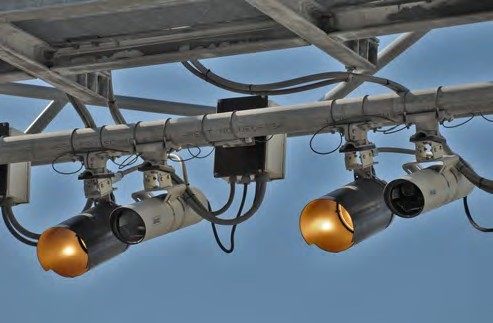The Washington State Department of Transportation (WSDOT) uses tolling as a key mechanism for managing demand on I-405, SR 167, SR 99, SR 16, and SR 520 and for funding megaprojects on those facilities. Tolls impose an expense on roadway users, and while tolls are true “user fees,” imposition of these fees can raise concerns about equity. This project provided insight into the use of WSDOT’s toll facilities that is intended to serve as the basis for evaluating the equity implications of those toll facilities.
To provide WSDOT with a better understanding of the current use of its toll facilities, researchers examined how the combination of household income and tolling affect the use of state roadways. They also provided an understanding of how costs associated with toll facilities are currently being distributed. Finally, they provided a baseline of use against which changes in use can be measured, given changed economic conditions or policy decisions (such as the introduction of a low-income toll program).
The project’s analyses used data from all five WSDOT toll facilities for the period of July 1, 2021, through June 30, 2022. The analytical results from this project were also compared with similar results from a 2018 study on toll equity on I-405. A few of the most significant findings are the following:
- The use of tolls to pay for at least a portion of the cost of very expensive roads in Western Washington does provide some equity benefit. It shifts at least some of the cost of those roads to the wealthier portion of the state and away from lower-income residents in the eastern portions of the state.
- Whether some of the burden is shifted to lower-income residents in the western part of the state depends on whether easily accessible alternatives to each toll facility exist, particularly for those who live near those facilities.
- The environmental “costs” (primarily noise and air pollution) of living near these facilities should also be part of any equity analysis.
- Among Western Washington residents, members of higher-income households are more likely to pay tolls and make comparatively fewer toll-avoiding trips than those of moderate- and lower-income households. This indicates that the cost of the toll facilities is shifted to households that are more able to pay for them.
- Not surprisingly, the profiles of toll facility users and their utilization of each facility are greatly influenced by the demographics of the travel sheds that the roads serve.
The project also included a literature review of income-based toll programs in the United States to identify best practices and lessons learned. Most programs begin as pilots, allowing for modifications. When a low-income toll program is designed, it is crucial to balance the number of participants and benefits offered and to consider the transportation needs of other user groups. Ongoing engagement and effective communication with communities is crucial for program success.
The researchers found that many programs use the Federal Poverty Level (FPL) as an eligibility criterion, but it is vital to base the income threshold on local conditions and needs. Overcoming enrollment barriers—such as language barriers, lack of technology access, and complicated application processes—is essential for enhancing the program. The cost of purchasing a transponder, the requirement for a minimum account balance, or automatic reloading thresholds can be barriers for low-income motorists. Overall, there is no universal approach to creating a low-income toll program, and agencies must weigh their priorities and the priorities of the communities they serve to determine the best options.
Reports: WA-RD 931.1 and WA-RD 931.2
Authors:
Mark E. Hallenbeck, Washington State Transportation Center, UW
Angela Kitali
Sam Ricord
Yinsheng Kou
UW Tacoma School of Engineering and Technology
Sponsor: WSDOT
WSDOT Technical Monitor: Tyler Patterson
WSDOT Project Manager: Doug Brodin

